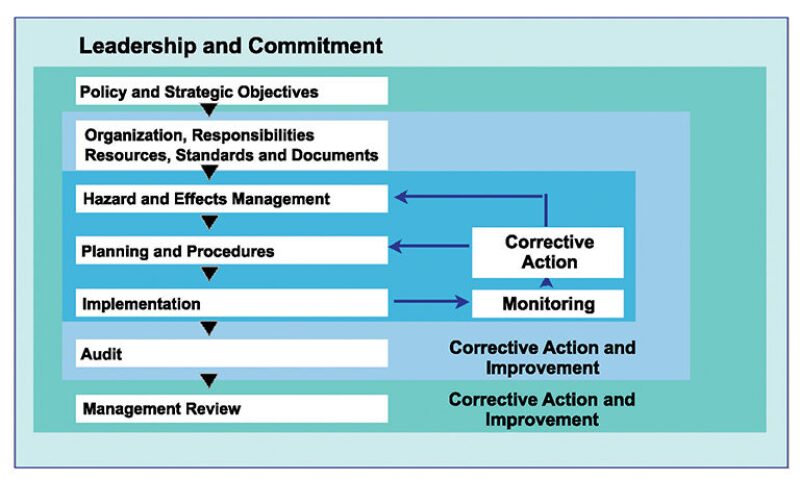Working as an environmental and social performance leader in the extractive industry presents challenges in many areas. Among them is the integration of economic, environmental, and social considerations into business decision making for sustainable development (SD). SD requires balancing short- and long-term interests. In this context, it is crucial to me that Shell is committed to SD as a core element of its business principles. Of the many factors contributing to SD, I would like to describe the role of impact assessment (IA), in this article.
In order to implement the steps contributing to sustainable development, Shell has adopted a management model following Corporate Social Responsibility (CSR) concepts, so that the process is managed as any other business activity. That said, how does an organization like Shell implement the concepts of CSR in daily operations? We have learned that a traditional, technical approach to environmental and social challenges was not always effective in controlling the risks stemming from public perceptions (e.g., the decommissioning and removal of the Brent Spar or the protection of the Western Pacific Grey Whale’s feeding grounds off Sakhalin Island).
Among the lessons we learned from Brent Spar is that we need to take account of people’s feelings. Science by itself is not enough.
Jon Jennings, Managing Director, Shell, 1996
If traditional analyses of environmental and social impacts and sound technical solutions are not sufficient to manage societal expectations, then what are the key additional elements of CSR? According to one of the many definitions:
CSR is a concept whereby organizations consider the interests of society by taking responsibility for the impact of their activities on customers, suppliers, employees, shareholders, communities, and the environment in all aspects of their operations. This obligation is seen to extend beyond the statutory obligations to comply with legislation and sees organizations voluntarily taking further steps to improve the quality of life for employees and their families, as well as for the local communities and society at large (Wikipedia 2008).
Managing HSE and SD
We believe that managing environmental and social impacts and opportunities fits well with the model that Shell has adopted for managing health, safety, and the environment (HSE) in the company. We apply the concepts of ISO 14001 to an environmental management system (EMS) for health, safety, and the environment.
You may wonder what an EMS does for a company. An EMS meeting the requirements of ISO 14001:2004 is a management tool that enables an organization of any size or type to
- Identify and control the environmental impact of its activities, products, or services.
- Improve its environmental performance continually.
- Implement a systematic approach to setting environmental objectives and targets, to achieving them, and to demonstrating that they have been achieved.
This EMS has been translated in Shell into the HSE/Management Systems (MS) model shown in Fig. 1. The heart of the model is the hazard and effects management. For the sake of argument, this can be seen as the identification of potential impacts (as in an IA) and the development and execution of the plans.

IA and Stakeholder Engagement
This brings me to one of the first steps in trying to manage the environmental and social aspects of our business, which is the (integrated) IA. Experience has shown that the greatest business and societal benefits of new projects come from effective identification and management of potential impacts during planning and design. As a company, we require that an integrated environmental, social, and health IA is carried out before the implementation of any new project or significant facility modification. This IA provides a structured way of looking ahead at the potential positive and negative impacts that could arise throughout the project’s lifecycle. The results help us to minimize negative impacts by adapting the design of the project.
From experience, we have also learned that stakeholder engagement is the key to success. Our stakeholders are all those affected by, or who can affect, our operations. Engaging stakeholders enables us to understand the concerns, priorities, and expectations of different groups.
For the oil and gas industry, the effects of projects on the environment (social or ecological) are in many ways critical to its success and the overall contribution to SD. Although it is accepted that a proper IA may increase the success rate of implementing a project, it sometimes appears difficult to integrate and align the IA process with the project development and associated decision making. In project development, we face a number of difficulties. Among them is how to obtain and document the appropriate level and quality of information at the right time, for the right stakeholders, and allow the decision makers to base their decisions on this information. One way to do so is to treat IA also as a staged process, focused on providing a level of information that is aligned with the project-development process (Veerkamp 2004).
The solution developed by Shell is to follow the natural development of a capital project and to take a phased approach to the IA as well. Over the last few years, we implemented the following four phases of IA:
- Issue and stakeholder identification. This is to identify major issues and important stakeholders. It allows a focused, early effort to substantiate input for the decision review before front-end engineering begins.
- Preliminary assessment. This is the verification of major issues and “showstoppers,” plus the beginning of consultation with the stakeholders. As not all the details of the project are available yet, this study may not be detailed enough to use as basis for permit application. However, it will enable project management to assess the project’s environmental, social, and/or health risks and the potential mitigation required.
- Full IA. This is an upgrade of the preliminary assessment, usually requiring more detailed input on both project and baseline. It will also include more intense stakeholder consultation, to verify our assessment of impacts. Typically, this IA is the basis for legally required documentation, permits, and the internal final investment decision.
- IA implementation. This phase is often underestimated. The IA is often just seen as a prerequisite for obtaining the necessary permits and not as a tool to maximize project benefits to the company and to the environment. Implementation entails the incorporation of mitigation measures in the HSE/MS of the project, ongoing monitoring of impacts, and verification of some of the identified uncertainties. This phase actually never ends. It lasts as long as the project.
Conclusion
In summary, we have learned that early identification and integration of the management of environmental, health, and social factors throughout the lifecycles of our activities is a key contributing element to SD. The results of IAs can be documented in integrated or separate plans (e.g., biodiversity action plans, social-performance plans, and local-content and social-investment plans) and should be reviewed during HSE/MS audits and social-performance reviews. This will ensure that these plans are kept alive and the management cycle is closed.
Working as an environmentalist also requires a strong external focus. This has resulted in me making many non-Shell and nonindustry contacts during my career. Additionally, I was elected president of the International Association for Impact Assessment (IAIA) and served 6 years on the IAIA board. This has tied in with the work I have done for the past many years within Shell, and it thus has allowed me to contribute from a wider societal context. I have enjoyed working in this field and wish to continue for many more years, as I see a lot of challenges ahead for environmental and social-performance practitioners.
Reference
Veerkamp W. 2004. An Industry Perspective on ESHIA and SIA in Project Development. International Association for Impact Assessment. Presented at the annual conference of IAIA, Vancouver, Canada, 24–30 April.

William Veerkamp is Global Manager of Environmental and Social Performance for Shell Exploration and Production. He has more than 20 years of experience as environmental and sustainability advisor at the global and business levels within the Shell Group. Verrkamp holds a PhD in environmental and toxicological chemistry. Over the years, he has become increasingly involved in many aspects of sustainable development (SD), including soil and groundwater contamination, the fate and behavior of chemicals in the environment, and climate-change issues within and outside of Shell. Veerkamp's work includes impact assessment; stakeholder engagment (national and EU regulators, as well as nongovernmental organizations); environmental and health, safety, and environment management systems; development of environmental standards and guidelines, as well as SD policies; life-cycle assessment studies for environmentally friendly products; and fate-and-behavior studies and modelling for new and existing substances.

